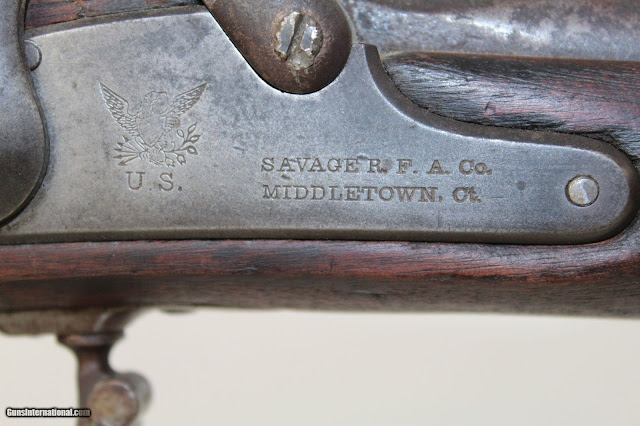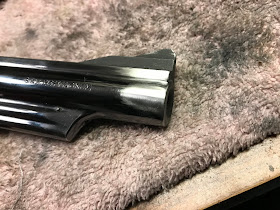When investigating these old gun factories I find many coincidences and names that will lead you down the wrong path, this story has a couple of those.
This story begins with the the man whose name the company bore: Edward Savage.
We should start by saying that Edward Savage's family is one of the oldest families in America, having settled Connecticut in the middle 1600's. We should also state that he is of no relation to Arthur Savage, who started Savage Arms in Utica, NY. Arthur's Father was born in Wales and emigrated to Jamaica in 1834.
Edward came from a family of gun makers, his Father Josiah Savage had been in a partnership with his brother in law Simeon North. See my post on Simeon North here.
Simeon North was known as the first pistol maker in the U.S as well as the man who invented the milling machine, he should have been the one given credit for The American System of Manufacturing (interchangeable parts).
When Josiah Savage died in 1831, Edward took over his Father's interest in the business. The North-Savage operation had a contract from the U.S. Government from 1829 for 30,000 Hall Rifles and in 1852 with the contract complete, Simeon North retired, turning over control of his shares to his son James.
The two cousins, North and Savage, continued to build and design firearms just as their fathers had.
On June 17th 1856 they patented a new revolver that used a unique double action design.
Below is an early version of the revolver.
James North passed away that same year, making Edward Savage the sole owner of the company. James North's son, Henry came to work for Savage shortly after and helped refine the pistol, which was nicknamed the "figure 8" for the shape of the trigger guard.
The pistol borrowed ideas from several guns, one of them the Alsop (pictured below)
The main difference was the Savage was a double action...well sort of, the large finger loop was used to cock the hammer and rotate the cylinder and the trigger was used to fire the gun.
Savage changed the name of the company to Savage Repeating Arms and searched for new capital and a new, modern factory to build his pistols.
The Alsop family loaned their patents and served on the board of the new company which was incorporated on August 17th, 1859. With a capital investment of $30,000 they rented, leased or perhaps purchased a building on Middlefield Street on the outskirts of town.
The 3-story brick building was originally built by Henry C. Bacon (not to be confused with the famous architect Henry Bacon, who was born after this Henry Bacon died) in 1854 for the manufacture of lawn mowers (the manual, push style of course). The factory was built on the banks of the Coginchaug River, no doubt to supply power for the machinery.
In the years 1860 & 1861 the revolver was redesigned and new patents applied for.
In 1861 the Union Army offered a contract for 20,000 of the units which the company supplied, the contract being complete sometime in 1862.
The firm also produced a number of rifles for the Union Army, below is a lock plate from a model of 1861 Rifle
In 1864 they were given a contract to build the Remington Split Breech Carbine....a gun that would evolve into the Remington Rolling Block.
Savage ended up building 20,000 of the carbines for the U.S. Military. Most were delivered after the war ended, but they were one of the few companies allowed to finish out their contract, whereas most contracts for armament were just cancelled outright.
With the ending of the war, came the end of government contracts, by 1866 the company had folded up and its assets sold off or reallocated.
Time Line of Events
1765 - Simeon North is born on the same day as Eli Whitney (July 13th)
1795 - Simeon North and his wife Lucy Savage buy a saw mill that sat on the land next to theirs and converted it to a forge
1799 - North receives his first contract
1816 - North invents the milling machine, critical in making interchangeable parts
1829 - A new contract for Hall Rifles requires a larger factory, he builds one on the Coginchaug River in Middletown CT.
1829 - North's BIL Josiah Savage becomes a partner in the business
1831 - Josiah Savage dies, leaving his shares to his son Edward
1852 - Hall Rifle contract complete, Simeon North retires, his son James takes his place
1856 - new revolver patented
1856 - James North dies
1859 - new company, Savage Revolving Firearms Co created
1861 - new contract for Savage pistol secured
1863 - Samuel Norris provides a contract to Savage for the Remington Split Breech Carbine
1866 - Savage Revolving Firearms Co goes under
What Remains
There are many examples of the Savage made revolvers around, including the very fine example at the beginning of this post.
The original North-Savage factory built in 1829 on the banks of the Coginchaug River is gone, in its place is a parking lot
The factory building built by Henry Bacon in 1854 still stands, after being used by Goodyear Rubber for many years, it then hosted many small businesses, it can be found at 465 Middlefield Street, Middletown, CT. Just up river from the old North-Savage plant location on the Coginchaug River. It is the white three story building in the middle of the picture.
Edward Savage's house, built in 1837, also still stands, having been restored and rebuilt over the years































































